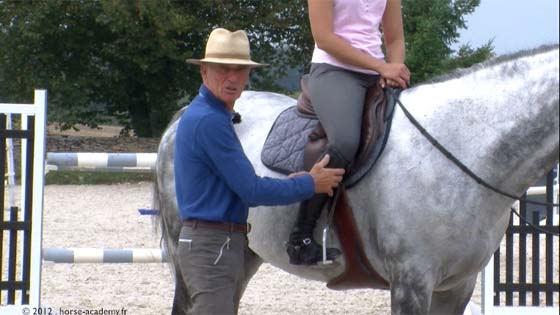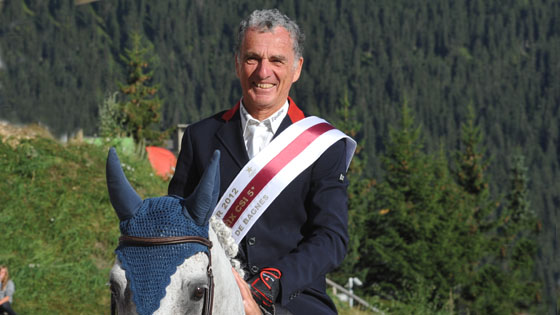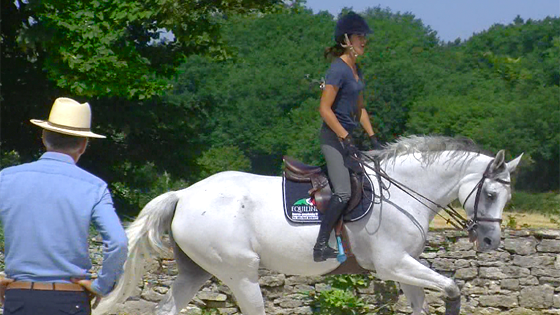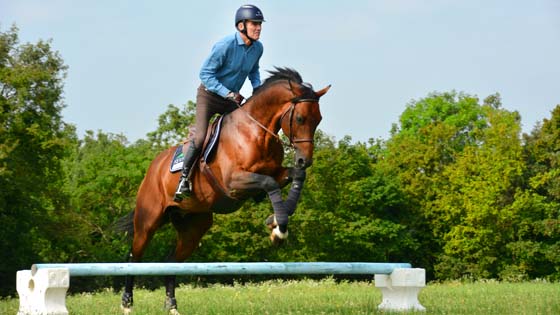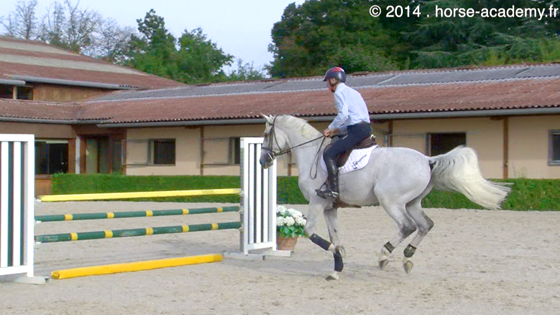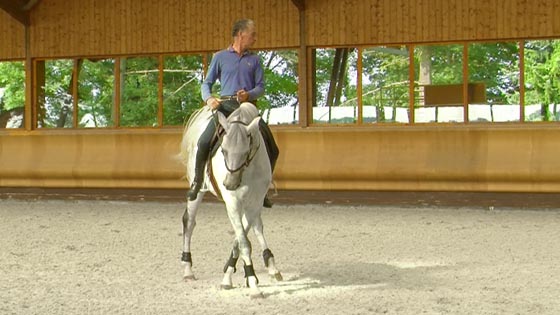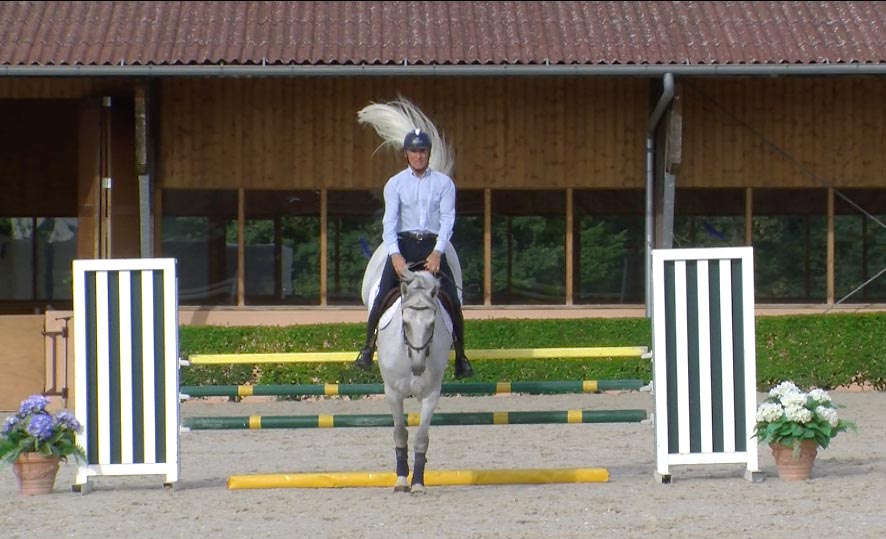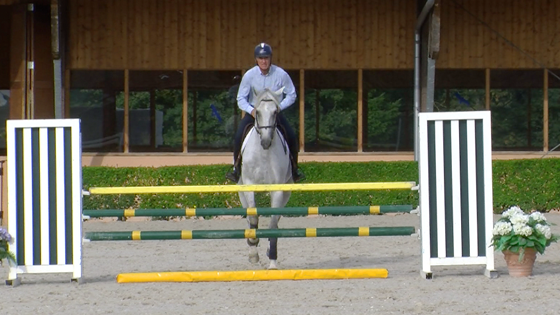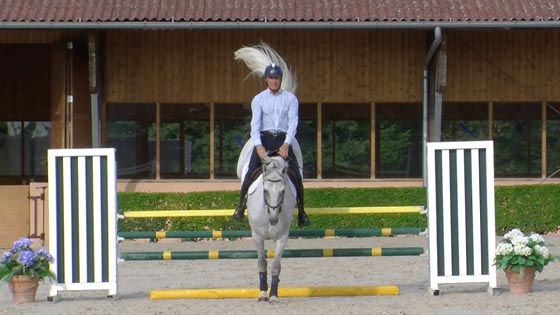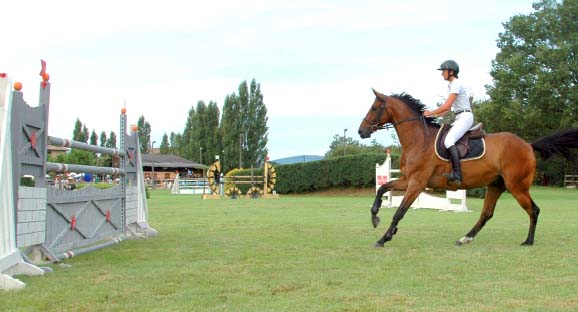Improving the horse’s strength in the approaches
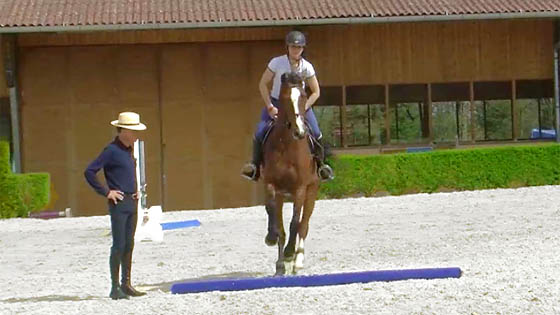
In this flat work session, Michel offers an exercise that will improve the horse’s propulsive force in front of fences while staying in control.
It is a known fact that riders modify their attitude as they come closer to an obstacle. The fear takes over, the rider gets stiffer which consequently disrupts the motion of his horse. The quality of the strides that was good just earlier, deteriorates compromising the quality of the jump.
It is crucial that riders improves their mental and physical state approaching obstacles by practicing specific exercises. This is what Michel offers through this ground pole exercise. Organizing the canter will optimize the horse’s strength in front of obstacles. The deal is to get more movement forward afar and then close up the horse, approaching the fence. It is common for riders to do the contrary. They hold the horse afar and then push the horse in the approach which leads the horse to get above the bit and out of control in front of fences.
This training will help horses gain the correct automatism in front of an obstacle, especially responsiveness, calm, and control. It will also benefit the rider who will feel confident with the quality of the horse’s canter and calm in front of an obstacle.
Marine, Michel Robert’s student, will demonstrate the exercise with her mare Tosca. The exercise have to be performed in both directions.
At the beginning, Marine lets her mare get familiar with the set up. As the exercise progresses, Michel requires the rider to increase her level of requirement…to conclude with well performed round.

